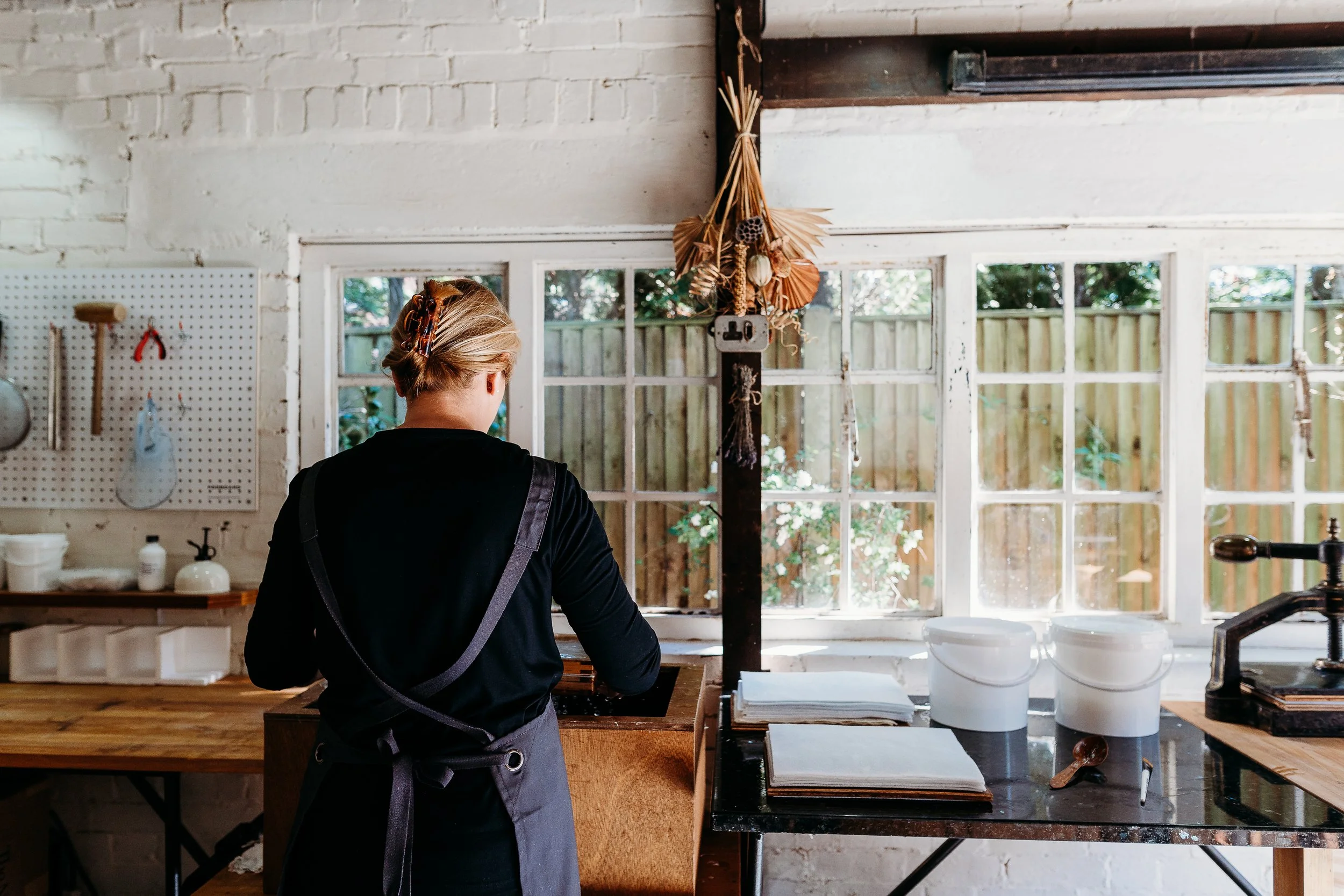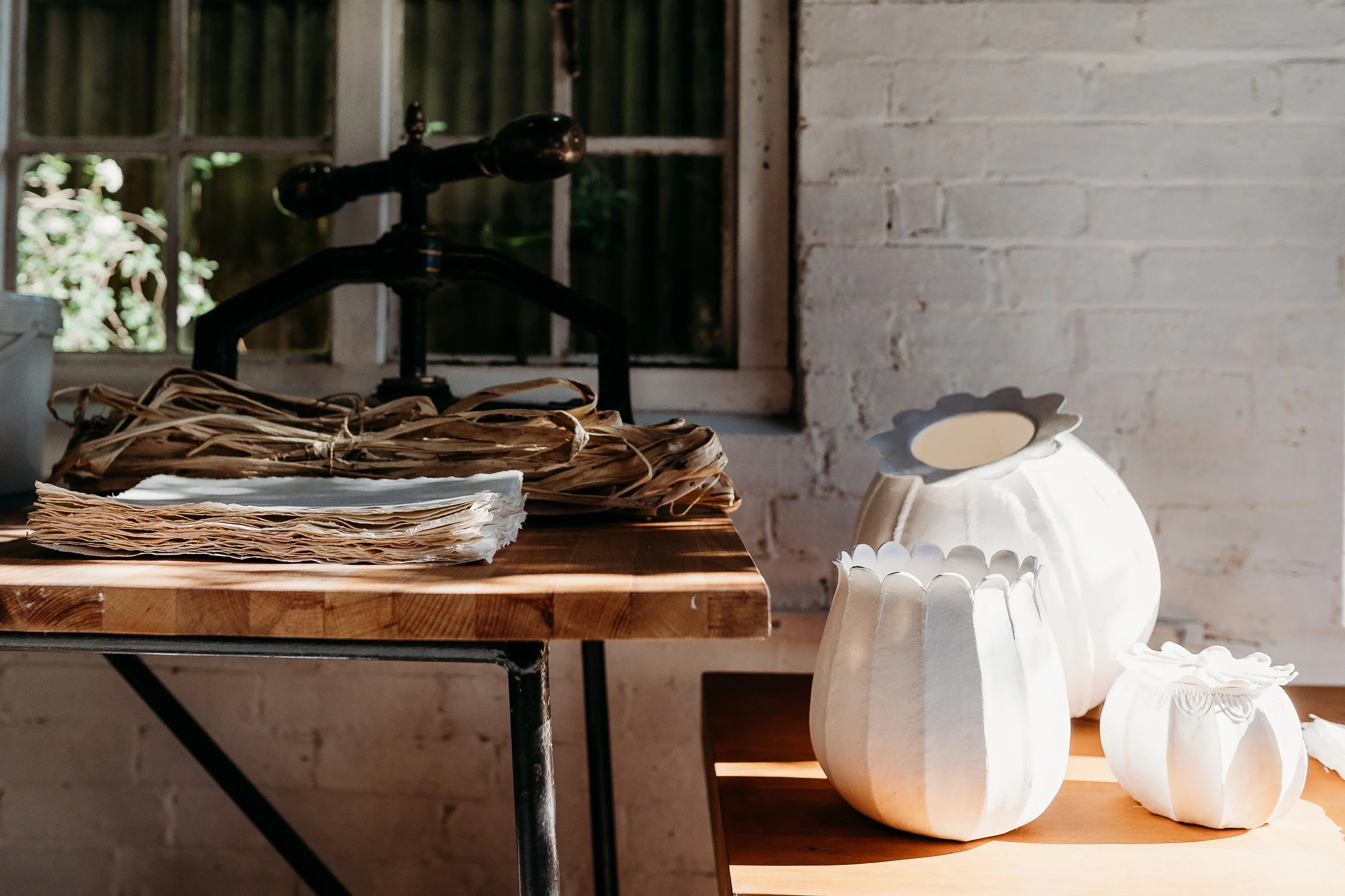
PAPER
“Paper enthusiasts are spread all over the world...
and one doesn’t know of others quiet love...”
Armin Renker, Die Kunstgeschichte des Papers, 1934
From being respected as a sacred material to its utilitarian use in everyday life, paper has also been much enjoyed in the art world. I am thrilled to be aware of the artistic experimentation in recent decades, which has extended paper’s aesthetic role beyond its accustomed use. In parallel, revitalisation of the traditional crafts and artisans’ methods, has created a renewed interest in handmade paper.
Paper making has been flourishing in Western Europe for centuries. Traditionally, it was made from old clothes, such as linen rags. These were cut into small pieces, beaten to a pulp and dispersed in a vat of water. A sheet of paper was formed by a particular motion of dipping and lifting a mould and deckle (specific papermaking tools comprised of two frames, one covered with the wired mesh). Nowadays, very few paper mills make paper by hand and consequently their papers are highly regarded, mainly used for art or book restoration. It is encouraging that paper enthusiasts and artists in their studios continue to support the revival of the traditional papermaking craft.
The fibres I use are derived from linen, cotton, banana leaf and mulberry shoots. Flax (linen) and kozo (mulberry shoots) offer fantastic strength through the length of their fibres and abaca (banana leaf) is much loved for its softness and creamy colour.
Chemical and physical properties of a certain fibre determine the preparation process, such as beating. Flax, cotton and abaca are beaten in my reliable Hollander beater (crafted by Tallers Soteras in the papermaking area of Capellades).
Kozo, on other hand, I beat using a wooden mallet, rather in the traditional way of Japanese paper makers.
There are number of additives used in paper making. I tend to keep my pulp as pure as possible and the paper I make is acid free and of archivable quality.







